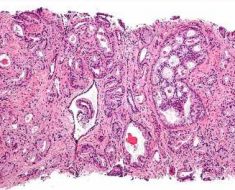(HealthDay)—In pretreatment isolates of Mycobacterium tuberculosis, higher minimum inhibitory concentrations (MICs) of isoniazid and rifampin below the standard resistance breakpoint are associated with increased risk of relapse, according to a study published in the Aug. 30 issue of the New England Journal of Medicine.
Roberto Colangeli, Ph.D., from the Rutgers-New Jersey Medical School in Newark, and colleagues analyzed pretreatment isolates of M. tuberculosis from patients who subsequently had a relapse or were cured to determine the MIC values of isoniazid and rifampin that were below the standard resistance breakpoint. This analysis was combined with clinical, radiologic, and laboratory data to generate predictive relapse models, which were then validated.
The researchers found that the mean MIC of isoniazid below the breakpoint was 0.0334 ± 0.0085 µg/mL and 0.0286 ± 0.0092 µg/mL in the relapse and cure groups, respectively. This represented a 1.17-fold higher value in the relapse group. For rifampin, the corresponding MIC values were 0.0695 ± 0.0276 µg/mL and 0.0453 ± 0.0223 µg/mL, representing a 1.53-fold higher value in the relapse group. In a multivariable analysis, higher MIC values remained associated with relapse. The area under the curve was 0.779 in an analysis of receiver-operating-characteristic curves of relapse based on these MIC values.
Source: Read Full Article





